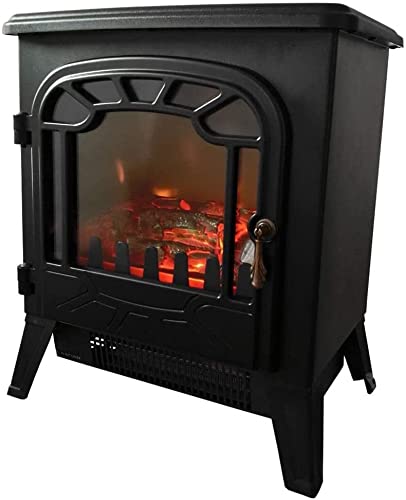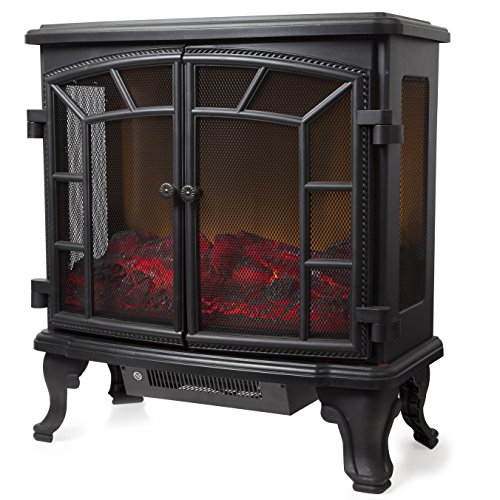Why Stoves Electric Are the Green Choice
A Brooklyn co-op has replaced 49 gas stoves, including radiant and induction models, with electric ones. The switch will save money for the cooperative and eliminate costly gas line repairs, inspections, and Local Law 97 requirements.
 Electric stoves do not release harmful carbon dioxide or harmful emissions unlike gas stoves. Electric stoves are powered by renewable energy sources such as wind or solar.
Electric stoves do not release harmful carbon dioxide or harmful emissions unlike gas stoves. Electric stoves are powered by renewable energy sources such as wind or solar.
They are more secure
Many homeowners were hesitant to change their gas stoves to electric models in the past. This was due to the hysteria stirred up by pundits and politicians that claimed that government bureaucrats would take their gas stoves off their walls. Electricity has numerous advantages over gas. This includes a more sleek design and a lower price at first. They are also easier to clean and are more efficient in energy use.
According to consumer reports, gas stoves can release harmful pollutants which are detrimental to health. These pollutants irritate airways and can exacerbate asthma especially for children. They also contribute to the greenhouse gas emissions and outdoor pollution. This has led to increased concerns about the dangers of gas stoves, and some cities restrict their use in new construction homes. In turn more people are choosing to install electric stoves in their homes.
Gas stoves can be more expensive to operate than electric stoves due to the fact that they require gas piping and are not as energy efficient. They are also prone to breakdowns and require regular maintenance. Electric stoves, on the contrary, are more reliable and energy efficient. They can also be used in power outages and provide more precise temperature control. They are also easier to clean since they do not have grates that can get filled with food particles.
In the end, it is the homeowner to decide what type of stove they would like to install in their home. It is crucial to keep in mind that electric stoves are most well-known. However, the decision should be based on personal preferences and home set-up.
There are three types of electric stoves: coil-top glass-top and induction. The two types are similar in that they utilize 120 volts of electricity to heat the burners. However induction stoves differ from conventional electric stoves since they use magnetic technology to heat cookware instead of metal coils. Induction stoves are more expensive than coil stoves however they are also more efficient with energy.
It is more efficient
There are many reasons to switch from gas stoves to an electric stove with the most important being their higher efficiency. Electric stoves are more expensive initially however they will save you money in the end because of their lower operating costs. They also have a smaller carbon footprint. This makes them an excellent option for green homes.
The way stoves electric make use of energy is more eco-friendly than a gas stove. Electric stoves make use of electricity produced by renewable sources such as wind or solar power, whereas gas stoves use natural gas that is extracted through Fracking. Additionally, electric stoves do not emit any of the combustion byproducts gas stoves do.
The click, hiss, and the glow of the blue flame might remain appealing to many cooks. However, it comes with hidden costs, both for humans and the environment. Numerous studies have proven that natural gas stoves are harmful to the human body and environment. Luckily, top tier chefs like Tu David Phu are switching to electric stoves and urging others to join them.
When you use a gas stove the energy that generates the blue flame is released into the atmosphere and contributes to heat-trapping emissions that cause climate change. The reason is because natural gas must be extracted from the earth, and methane is released into air in the process. In addition methane leaks can occur at every stage of the supply chain, from production to delivery.
When cooking on gas stoves, the chemical combustion products of natural gas burn in the air, releasing ultrafine particles and gases into the air. These pollutants can cause irritation and can trigger asthma symptoms, especially for children. In addition, the combustion of gas generates nitrogen oxide, which causes respiratory problems and can be poisonous if breathed.
An electric stove however is not releasing these chemicals into the air. Electric stoves are powered by coal, however advancements in wind and solar energy have made this an environmentally sustainable option. A new generation of electric stoves is so efficient, they not only cut down on the cost of your home, but they also reduce your environmental footprint.
They are more affordable
Electric stoves are generally less expensive than those powered by gas. They are less expensive upfront and also have lower operating costs, due to their powerful power transfer technology. They are also able to be used in a power failure. They are also much safer to use since they operate using heating coils or burners instead of open flames. This is particularly beneficial in homes with children, who might be enticed to fiddle with knobs or put their hands in hot areas.
Electric stoves are also easier to clean. Instead of having multiple grates, they have a single, smooth surface that is easy to clean. Furthermore, you can monitor the heat using dials to know exactly how hot to cook. However, this could also be a disadvantage, since it may take some time to adjust to the temperature.
Gas stoves can also emit pollutants that can be harmful to the health of people. The gas industry claims that the emissions aren’t harmful, however, federal agencies are looking at stricter regulations to limit their impact on climate change and the quality of indoor air. These changes could result in a ban on gas stoves in the future.
Gas stoves need an electric line to function, and many homeowners don’t have one. It is possible to install one from scratch however, it can be costly and time-consuming. Meanwhile, electric stoves only require a power outlet which is what most homes already have. They are an excellent choice for older homes or those with a smaller budget.
In addition, many are qualified for rebates on energy-efficient small electric stove heater appliances, such as stoves. This program is part of the IRA’s High-Efficiency Electric Home Rebate. It’s not yet launched, but it will be accessible in the majority of states by the end of the year. These rebates make switching to an electric cooktop more affordable for a lot of people. Electric stoves are also cheaper over the long run than gas stoves and can help reduce energy bills.
The products are sustainable.
In terms of reducing carbon emissions, stoves electric are the best option. Gas stoves release harmful toxic substances like carbon monoxide and nitrogen dioxide. These toxins are connected to a variety of health issues, including headaches, nausea, confusion, dizziness and breathing problems. Furthermore, they could cause indoor air pollution which has been proven to be a factor in a higher rate of asthma in children.
These issues are forcing gas stoves to be replaced with more efficient electric cooktops. Electric ranges are not only more affordable to run than gas stoves, but also better for the planet. In contrast to gas stoves, which rely on natural gas, electric stoves can run on electricity from renewable sources. This makes them a green option for any home.
Electric stoves are also safer than gas stoves. Since they don’t use an open flame, they are safer than gas stoves and don’t create the same amount of smoke. They can also cook larger meals such as stockpots, quicker and more evenly than gas stoves. Additionally the coils on an electric stove cool off quicker than the ones on gas stoves. This means that pots and pans will not catch fire, which is important for households with elderly or children.
It is crucial to think about the impact on the environment when you choose an electric stove. There is a fact that fossil fuels are used to power electric stoves, but it’s nearly as bad as you think. In reality, it’s a far less harmful form of energy than oil or coal. Plus, the electricity you get to power your stove may be sourced from wind or solar energy which are both renewable sources of energy.
 Although the government doesn’t regulate indoor air pollution from gas stoves, many cities have banned gas hookups for new construction. The government offers rebates worth billions of dollars to encourage people to switch to electric log effect fires freestanding stoves. These incentives, along with greener technology that is more efficient, mean that electric stoves are becoming more affordable and well-known than ever before.
Although the government doesn’t regulate indoor air pollution from gas stoves, many cities have banned gas hookups for new construction. The government offers rebates worth billions of dollars to encourage people to switch to electric log effect fires freestanding stoves. These incentives, along with greener technology that is more efficient, mean that electric stoves are becoming more affordable and well-known than ever before.
